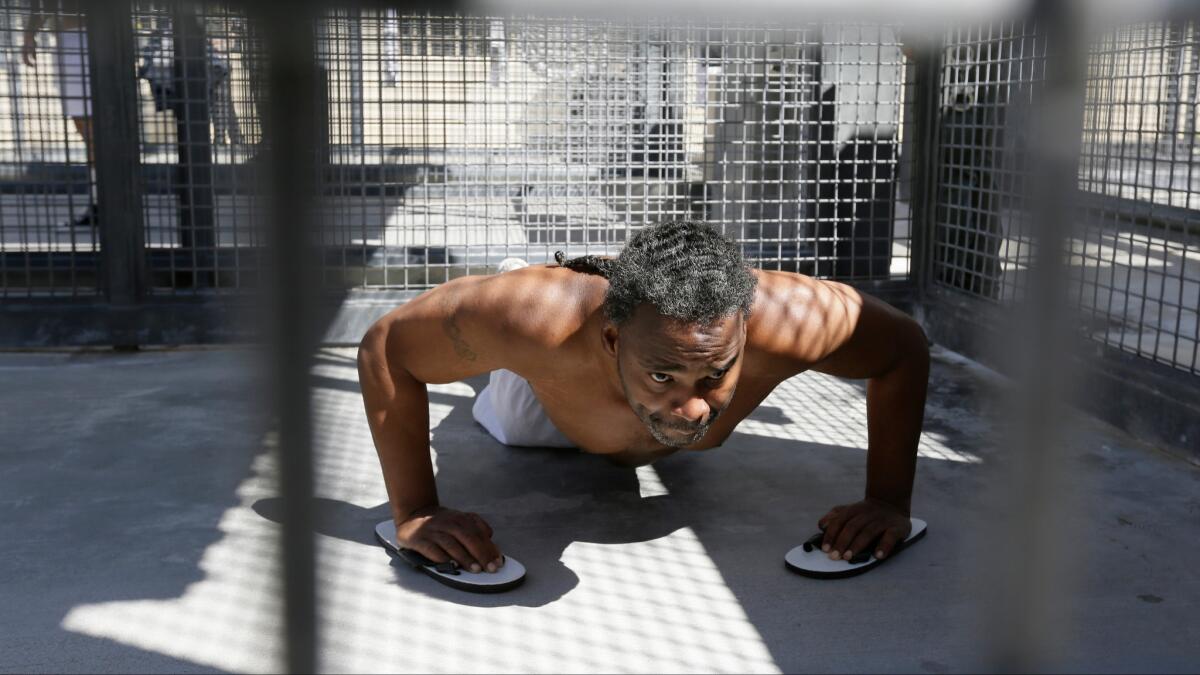Editorial: What crimes warrant the death penalty? Depends on the prosecutor

- Share via
If the government is going to impose a punishment as medieval and irreversible as the death penalty, it should take pains to ensure that the penalty is invoked only for the most heinous crimes and that it is applied fairly and consistently. Data compiled by the state attorney general’s office, however, suggest that California is falling short of those ideals because of the individual judgments of local prosecutors.
To be eligible for a death sentence in this state, a person must be convicted of first-degree murder enhanced by any one of about three dozen special circumstances — more than just about any other state (if California wants to reduce death sentences, it could start by reassessing these threshold crimes). There’s murder for hire. Murder to silence a witness. Killing a police officer. Wrecking a train. Using poison. Murder, even, when killing wasn’t the intent but occurred during the commission of any of a dozen other crimes. And on and on.
A jury doesn’t consider a death sentence unless a prosecutor asks it to. And that’s one of the places where capital punishment is inherently inconsistent.
Who decides whether a murder case involves one of those special circumstances, and thus warrants the death penalty? A jury, followed by the trial judge’s affirmation (a judge can reduce a death sentence, but not order one if the jury didn’t recommend it). A jury, though, doesn’t consider a death sentence unless a prosecutor asks it to. And that’s one of the places where capital punishment is inherently inconsistent. National studies have found that whether someone faces a death sentence depends significantly on the county in which the crime is committed because county-level prosecutors are the ones who decide whether to put the death penalty in play. In fact, 2% of counties nationwide account for a majority of death sentences.
How inconsistent is application of the death penalty? From 2011 to 2015, California juries handed down 74 death sentences, more than half from Los Angeles and Riverside counties, with 23 each. Yet Riverside County is only one-quarter the size of Los Angeles County and had fewer than one-sixth of the homicides during that same time. Is the nature of homicide in Riverside that much more heinous than in Los Angeles County? No. The difference between the two counties lies in the makeup of the prosecutorial teams deciding whether to seek the death penalty, with the standard set by the elected district attorney.
Tellingly, there was a change in the Riverside district attorney’s office in January 2015, and the current top prosecutor, Mike Hestrin, has been less aggressive in pursuing the death penalty than his predecessor, Paul E. Zellerbach, who himself sought it less often than the D.A. he replaced. Further evidence that individual prosecutors make a difference: Hestrin inherited 22 capital cases and, after reviewing them, dropped the death penalty against seven defendants. So two different district attorneys, looking at the same seven cases, came to different conclusions on whether the crimes merited a death sentence.
Hestrin and others argue that county district attorneys represent the views of their constituents, which explains why liberal San Francisco County tends not to seek the death penalty and more conservative Riverside County does (of the 747 people on death row, one is a San Francisco County case compared with 89 from Riverside). Yet that is one of the many grave flaws of capital punishment in general, and in California specifically. Capital punishment is authorized only by state law, but there is no objective statewide standard against which factors are weighed and a decision is made. It is unconscionable that the specifics of a crime are subordinate to a prosecutor’s whim in determining whether a death sentence will be sought.
Such arbitrary application of the death penalty is just one of a passel of reasons why the immoral practice should be abolished. California voters can do so by voting yes on Proposition 62, which would ban the death penalty and convert the current death sentences to life without parole. At the same time, voters should say no to Proposition 66, which affirms the death penalty and would, among other things, speed up the legal appeals process at the possible expense of constitutional protections.
Because of legal challenges to California’s lethal injection protocol, no one has been led to the death chamber at San Quentin in more than a decade. Since the death penalty was revived in 1978, California has executed only 13 people, and those came so long after the crimes took place — an average of 17 years and six months — that the executions served no purpose other than vengeance.
It’s far past time this state, and American society in general, ends this barbaric practice.
Follow the Opinion section on Twitter @latimesopinion or Facebook
More to Read
A cure for the common opinion
Get thought-provoking perspectives with our weekly newsletter.
You may occasionally receive promotional content from the Los Angeles Times.










